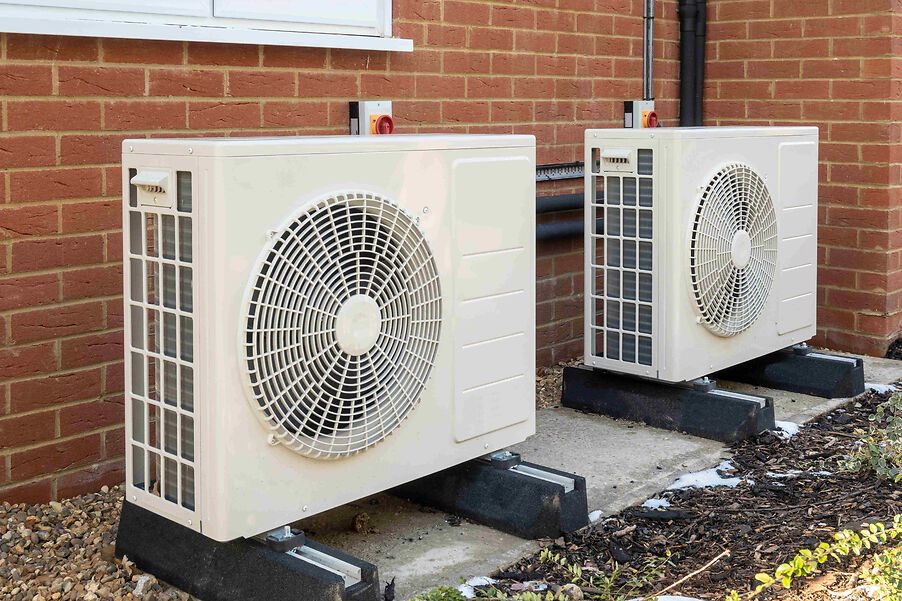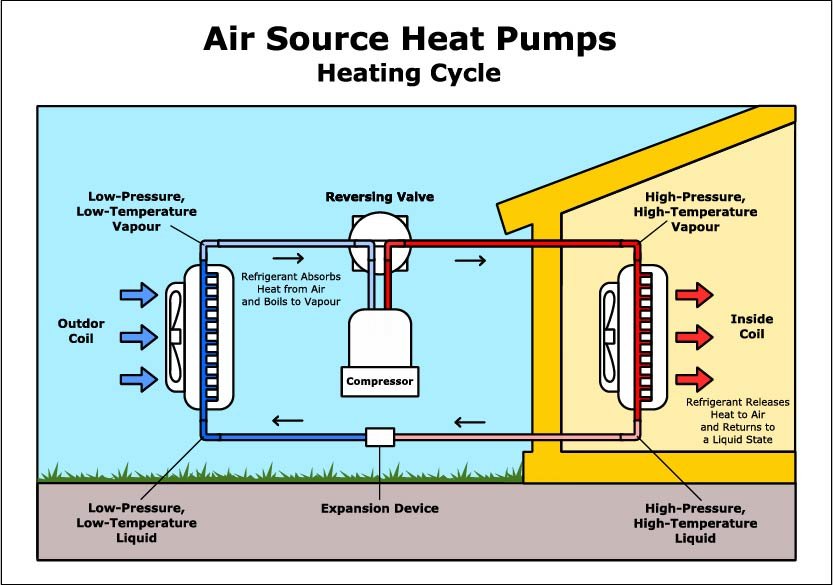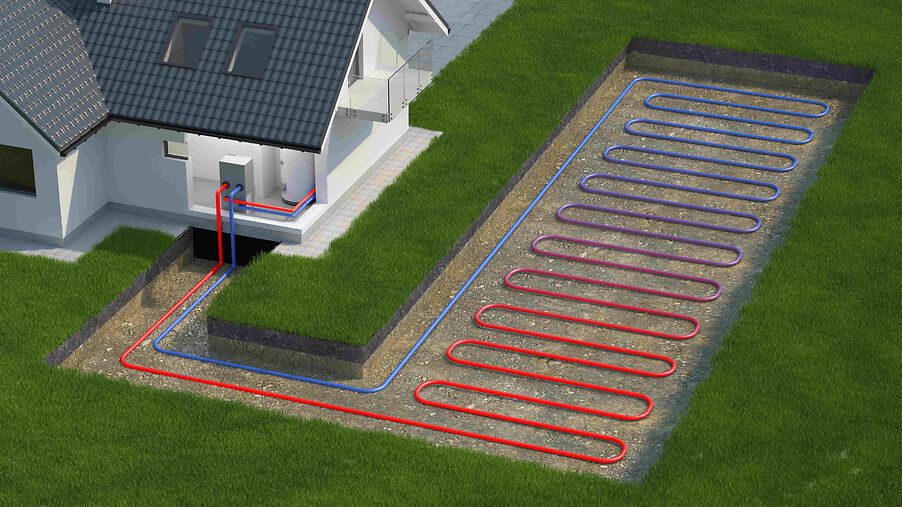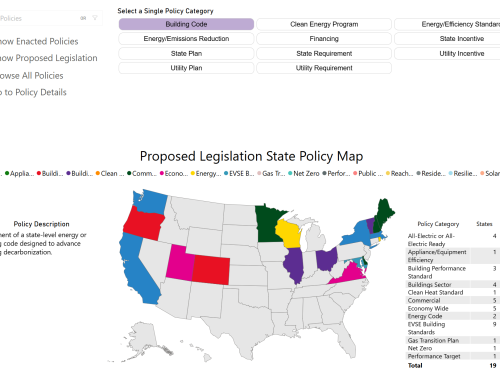
|
There are many types of heat pumps on the market, each with their own pros, cons, and use cases. It can be hard to keep them all straight, let alone their efficiency and performance metrics like SEER, HSPF, and COP. |
|
Easy, breezy, beautiful |
|
The most common type of electric heat pump is the humble air-source. In essence, an air-source heat pump is an electric appliance that moves heat stored in ambient air from outside into the interior of a building. It can also work in reverse to cool spaces, pulling hot air from building interiors and channeling it outside. |
|
Imagine it’s a frigid 30°F outside. You wake up freezing and crank the heat to 70. Immediately, the outdoor component of the heat pump (the outdoor coil) leaps into action. |
|
Even though the outside air is “cold” by our standards, it’s much warmer than the liquid refrigerant inside the outdoor coil, which boils at temperatures well below 0°F. The refrigerant heats up and expands, becoming gas. Next, that gas is compressed to become even warmer and channeled through a heat exchanger, which transfers stored heat from the refrigerant into the interior space. |
|
Now the indoor component of the heat pump (indoor coil) can blow that toasty air around your house, with the refrigerant returning to a liquid state to repeat the process. When it’s hot outside, the heat pump works in the opposite direction to cool spaces by simply switching the setting on its reversing valve. Voila, hot air out, cold air in. More research is being done to develop and deploy what are known as “cold-climate heat pumps,” which perform well even in very cold environments (think Upper Midwest) and on deep freezing days. |
|
Here’s a graphic from the Department of Energy to help you visualize the heat transfer process: |

|
Graphic Source: Department of Energy |
|
What the duct is a mini-split? |
|
Within the air-source heat pump family, there are two main types of units: ducted (a.k.a., “central”) and ductless (a.k.a., “mini-splits”). Central units circulate cold or warm air through the same pipe and vent systems used by traditional AC units. |
|
If a house does not have ductwork, then a mini-split becomes the default choice. Mini-splits use a conduit to link the outdoor coil with the indoor air-handling unit(s), the number of which depends on house size and number of rooms. Note that mini-splits work best with an open floor plan where the warm or cool air can more easily disperse. |
|
Ground- and water-source heat pumps |

|
Digital recreation of a ground-source heat hump with a horizontal group loop. |
|
Ground-source heat pumps (GSHPs) – often called geothermal heat pumps – work similarly to their air-source relatives. However, rather than extracting heat from the air, they draw it from the shallow subsurface of the earth. |
|
GSHPs can be configured either with a shallow, horizontal ground-loop (the cheapest means, if space permits) or with deep, vertical pipes that extend as far as 400 feet into the ground. |
|
GSHPs perform well even in the coldest or hottest parts of the country, as temperatures a few feet below ground remain close to 50 degrees all year round, fluctuating only minimally. According to the Environmental Protection Agency, ground-source heat pumps are the most energy-efficient ways to heat and cool your space. |
|
If a project site has access to a large and deep enough body of water, then a pond/lake ground-loop configuration may be used. In this case, circular piping is coiled below the surface of the water, and the liquid itself serves as the heat source/receptacle. This method can save the installer thousands of dollars by alleviating the need for much drilling or trenching! |
|
Just how effective are they? |
|
To illustrate heat pump efficiency and performance, there are a few key metrics to keep in mind. Let’s start with the coefficient of performance, or COP. |
|
COP is heating or cooling output divided by power input at a given time and temperature. |
|
Traditional electric resistance heaters have a maximum COP of 1 because they use electricity to create heat. But since air- and ground-source heat pumps just transfer heat from one space to another, they can have COPs, or performance factors, as high as 4 and 6, respectively. Note that no heat pump has one constant COP; rather, its performance varies based on weather and climatic conditions. |
|
To gauge heat pump performance over a whole heating or cooling season, we can utilize SEER (Seasonal Energy Efficiency Rating) and HSPF (Heating Season Performance Factor). SEER measures a heat pump’s total cooling output – in BTUs – over the number of watt-hours consumed during the spring and summer. HSPF is the same, but applies to heating output in the fall and winter. |
|
The minimum Department of Energy (DOE) standard for SEER is 14, but some hyper-efficient units boast a cooling ratio above 20. The DOE standard for HSPF is 8.2, with the priciest models scoring as high as 13. |
|
Not all heat pumps are the same. Depending on your home infrastructure, climate zone, heating/cooling needs, and budget, a certain heat pump may be more suited for you situation than another. |
Cover Photo: Two air-source heat pumps in the exterior of a modern home.
Photo: Nimur/ShutterStock



